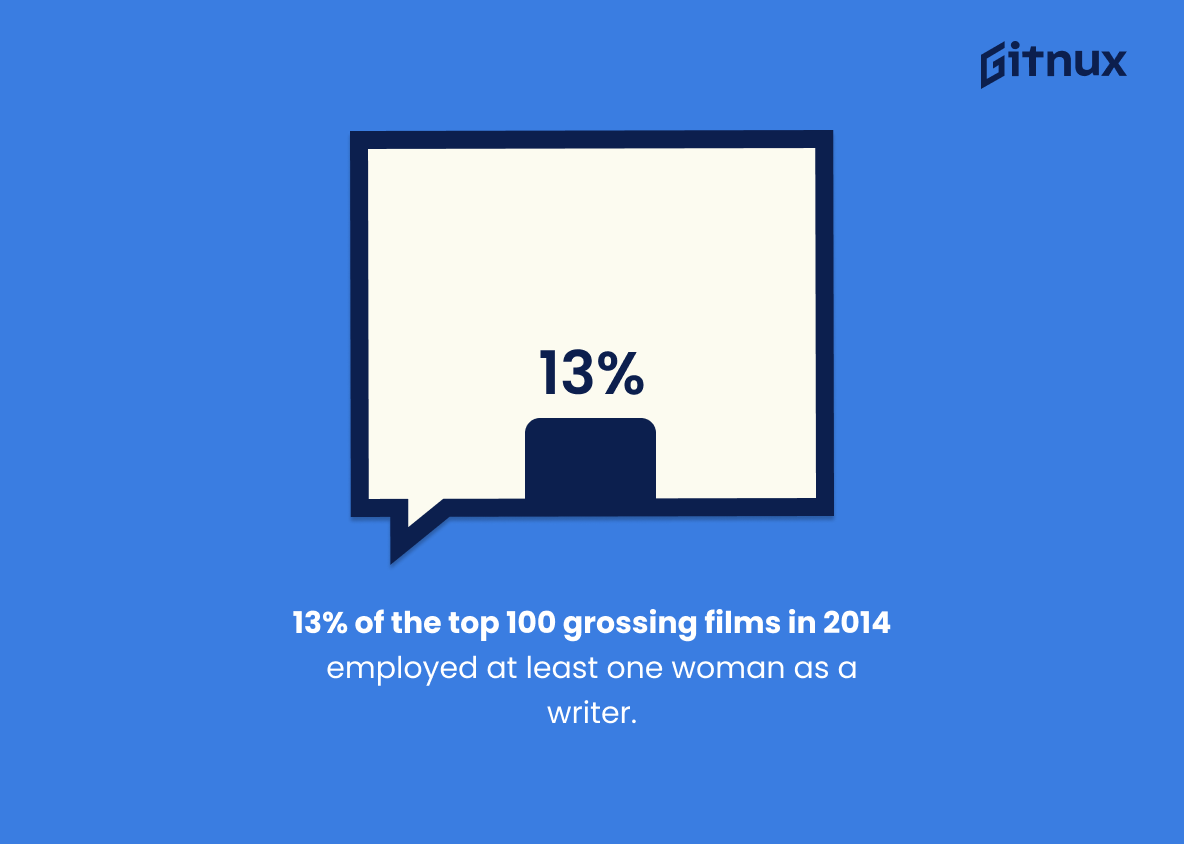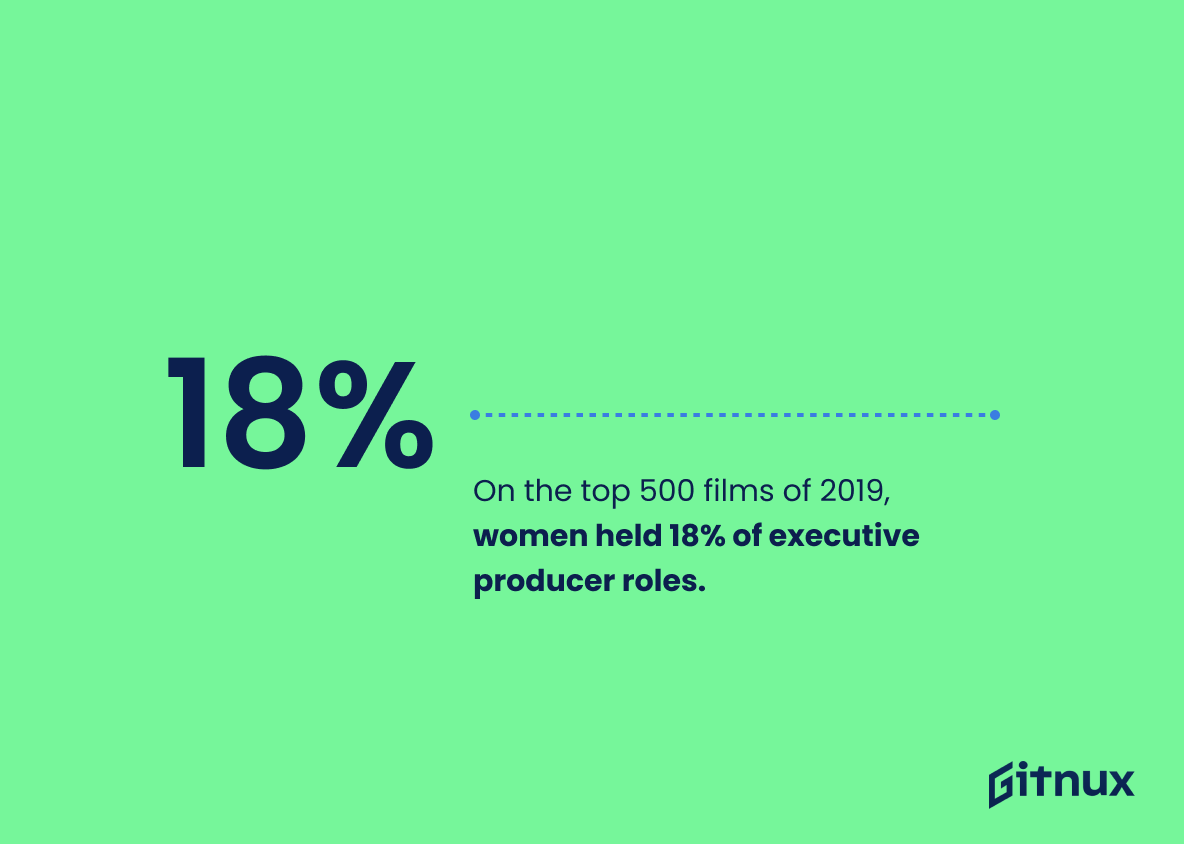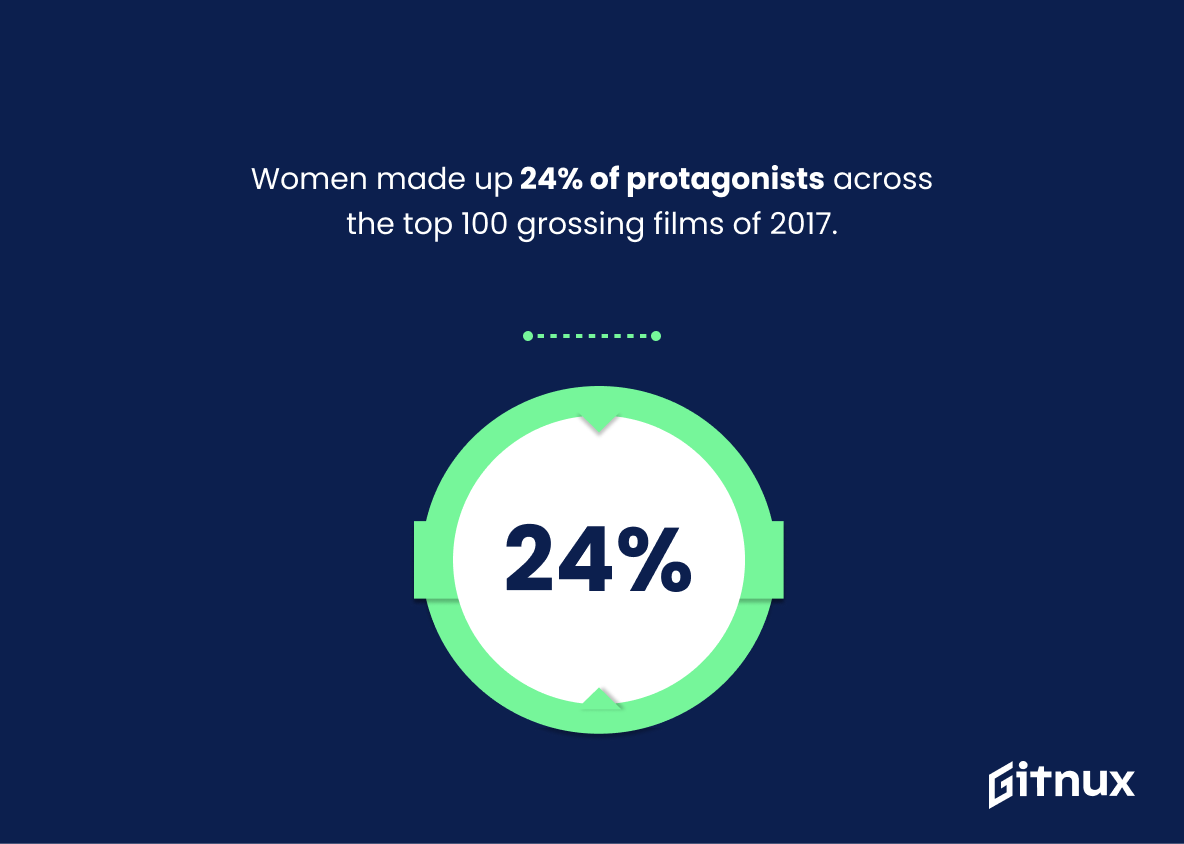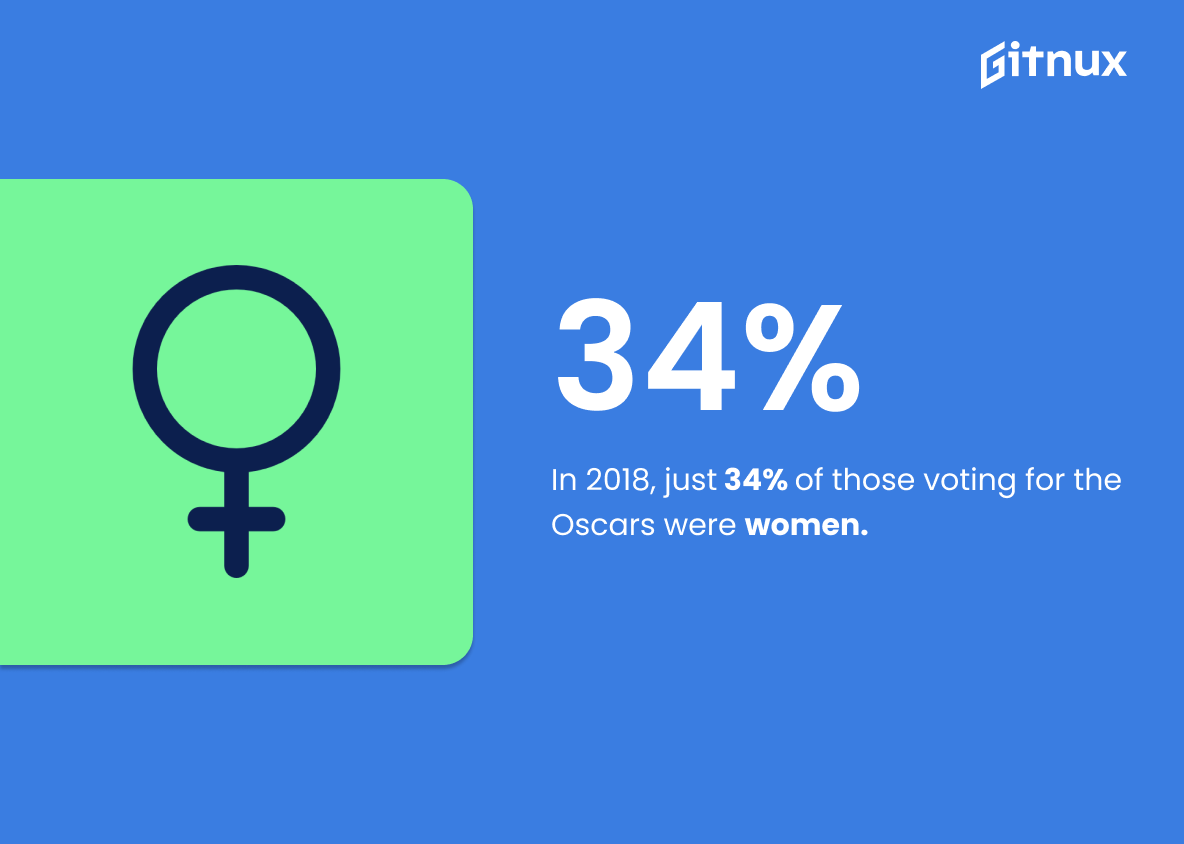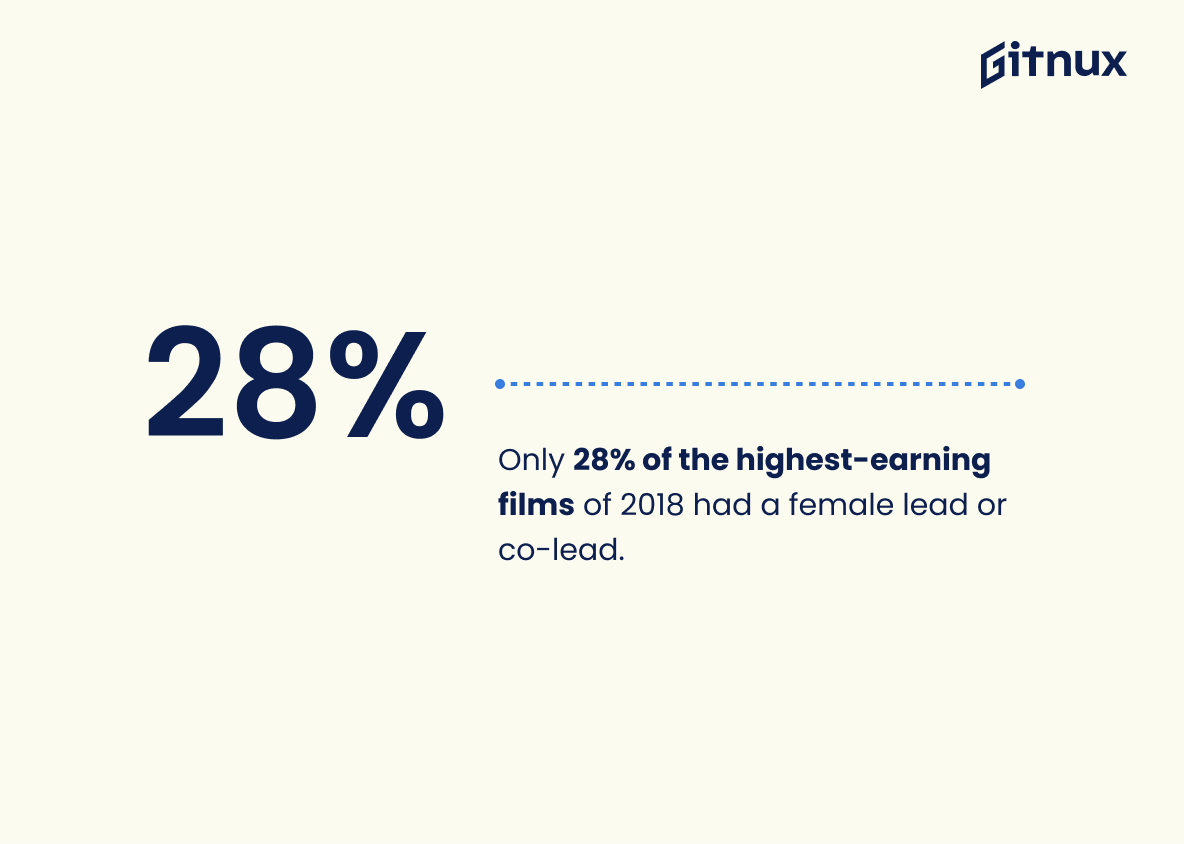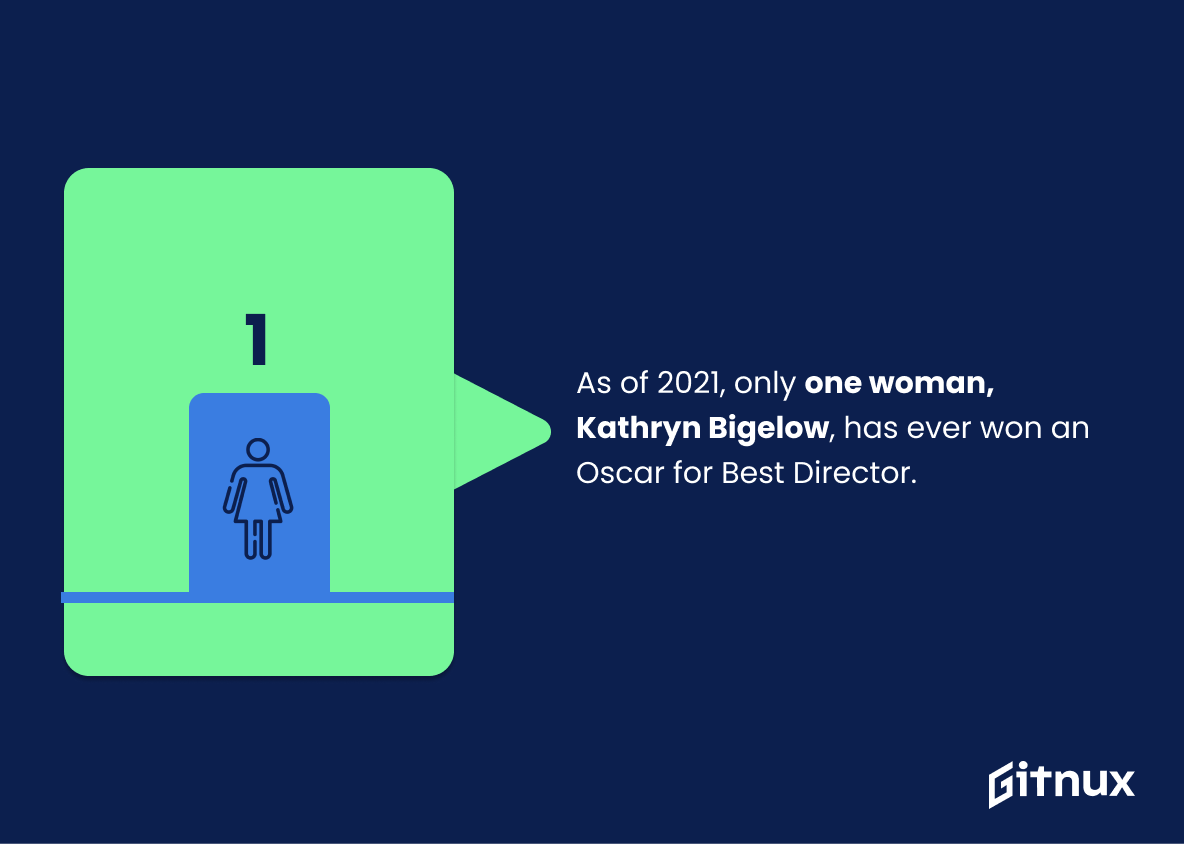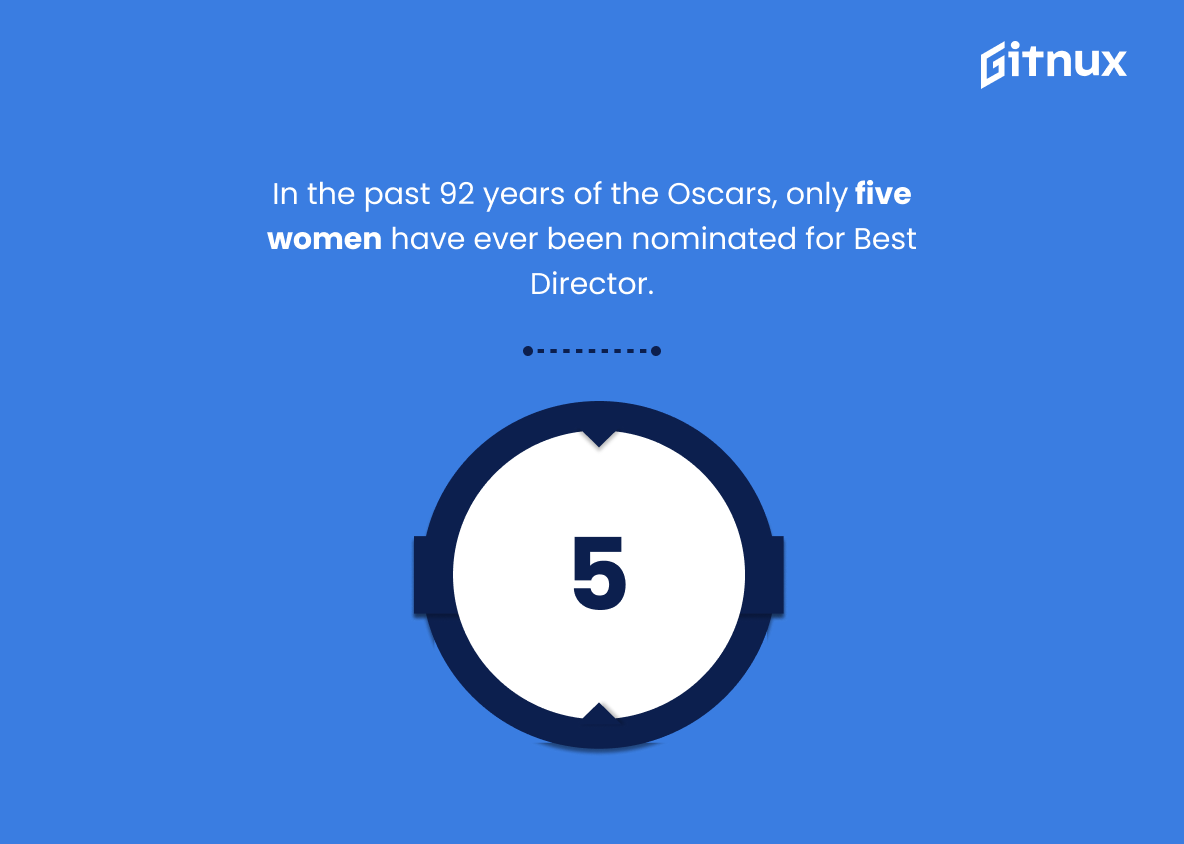It’s no secret that women have been underrepresented in Hollywood for decades. Despite the progress made over the years, there is still a long way to go before gender parity can be achieved in film and television. To better understand how far we’ve come—and how much further we need to go—let’s take a look at some of the latest statistics on Women In Hollywood:
1. Women accounted for 40% of speaking roles in top-grossing movies in 2020, an all-time high (The Wrap).
2. 23.6% of directors working on the top 1500 films produced between 2016-2020 were female (Women & Hollywood).
3. Only 7% of the top 250 films released in 2016 had female directors (San Diego State University).
4. 28% of cinematographers working on 100 highest grossing films were women last year (Women & Hollywood).
5 Across 1,200 top-grossing films from 2007 to 2018 only 4
Women In Hollywood Statistics Overview
Across 1,200 top-grossing films from 2007 to 2018, only 4.3% of directors were women.
This statistic serves as a stark reminder of the gender disparity that exists in Hollywood. It paints a picture of a film industry that is overwhelmingly dominated by men, with women making up a mere 4.3% of directors. This is indicative of a larger problem in the entertainment industry, where women are often underrepresented and undervalued. This statistic is a call to action for Hollywood to make a concerted effort to create a more equitable and inclusive environment for female filmmakers.
13% of the top 100 grossing films in 2014 employed at least one woman as a writer.
This statistic serves as a stark reminder of the lack of female representation in the writing of top grossing films. It highlights the need for more opportunities for women to be involved in the creative process of filmmaking. It also speaks to the need for more female voices to be heard in the industry, as well as the need for more female-driven stories to be told.
On the top 500 films of 2019, women held 18% of executive producer roles.
This statistic is a stark reminder of the gender disparity that exists in Hollywood. It highlights the fact that women are still vastly underrepresented in executive producer roles, despite the fact that they make up half of the population. This statistic is a call to action for the industry to take steps to ensure that women are given equal opportunities to succeed in the film industry.
In 2020, just 33% of film critics and journalists covering the Toronto Film Festival were women.
This statistic serves as a stark reminder of the gender disparity that still exists in the film industry. It highlights the fact that women are still underrepresented in the field of film criticism and journalism, and that there is still a long way to go before gender equality is achieved. This statistic is an important part of the conversation about Women In Hollywood Statistics, and it is essential to recognize the need for change in order to create a more equitable industry.
Women made up 24% of protagonists across the top 100 grossing films of 2017.
This statistic is a telling indication of the lack of representation of women in Hollywood. It shows that despite the strides made in recent years to promote gender equality in the film industry, there is still a long way to go. This statistic serves as a reminder that women are still underrepresented in the top grossing films of the year, and that more needs to be done to ensure that women are given the same opportunities as men in Hollywood.
In 2018, just 34% of those voting for the Oscars were women.
This statistic serves as a stark reminder of the gender disparity that exists in Hollywood. It highlights the fact that women are still significantly underrepresented in the voting process for the Oscars, and that there is still a long way to go before true gender equality is achieved in the film industry.
From 2011 to 2015, only 15% of the top 100 films featured a female protagonist.
This statistic serves as a stark reminder of the lack of representation of female protagonists in the top 100 films from 2011 to 2015. It highlights the need for more female-led films in order to create a more balanced and diverse cinematic landscape.
Only 28% of the highest-earning films of 2018 had a female lead or co-lead.
This statistic serves as a stark reminder of the gender disparity that exists in Hollywood. It highlights the fact that women are still vastly underrepresented in the highest-earning films of the year, despite the fact that female-led films have been proven to be just as successful as their male-led counterparts. This statistic is a call to action for the industry to recognize the value of female-led films and to create more opportunities for women in Hollywood.
As of 2021, only one woman, Kathryn Bigelow, has ever won an Oscar for Best Director.
This statistic serves as a stark reminder of the lack of recognition women have received in the film industry. Despite the immense talent and hard work of female directors, only one woman has been awarded the highest honor in the industry. This statistic speaks volumes about the gender inequality that still exists in Hollywood and the need for more opportunities for women in the industry.
In the past 92 years of the Oscars, only five women have ever been nominated for Best Director.
This statistic serves as a stark reminder of the gender inequality that has been pervasive in Hollywood for decades. It is a testament to the fact that women have been consistently overlooked and undervalued in the film industry, and that there is still a long way to go before true gender parity is achieved.
Conclusion
The statistics presented in this blog post demonstrate the significant gender disparities that still exist within Hollywood. Despite some progress, women are vastly underrepresented across all aspects of filmmaking and film criticism. Women accounted for 40% of speaking roles in top-grossing movies in 2020, an all-time high; however, they made up only 23.6% of directors working on the top 1500 films produced between 2016-2020 and just 7% of the top 250 films released in 2016 were directed by women. In addition to directing roles, female cinematographers comprised 28%, production designers 31%, executive producers 18%, composers 21%, critics 33%, protagonists 24%, writers 13%. Furthermore, while 34% leading roles went to women last year and 15% featured a female protagonist from 2011 to 2015 – only 19 % had a female lead or co-lead role 2018 – special effects supervisors 9%. Finally Kathryn Bigelow is currently the sole woman who has ever won an Oscar for Best Director out of 92 years with five other nominations total since 1929. These numbers make it clear that there is much work left to be done before true equality can be achieved within Hollywood’s industry standards
References
0. – https://www.oscars.org
1. – https://www.annenberg.usc.edu
2. – https://www.variety.com
3. – https://www.qz.com
4. – https://www.fortune.com
5. – https://www.thewrap.com
6. – https://www.forbes.com
7. – https://www.womenintvfilm.sdsu.edu
8. – https://www.britannica.com

